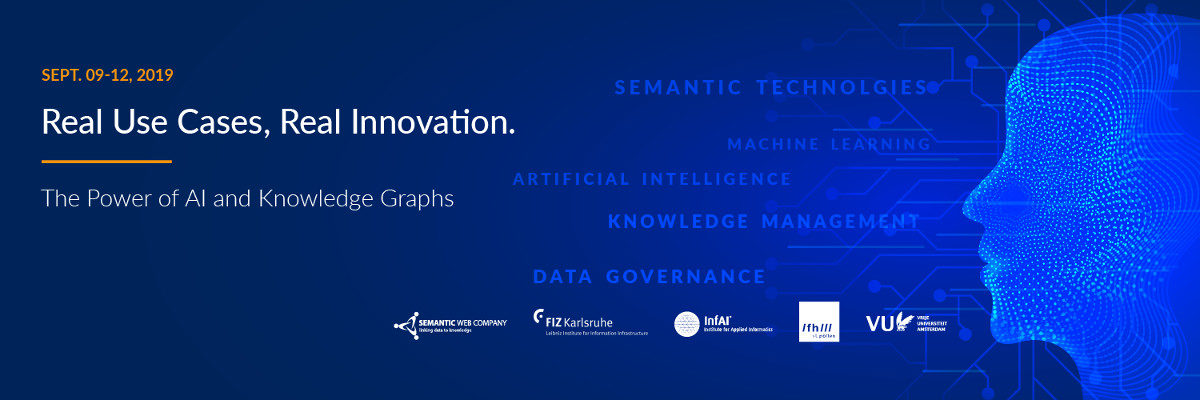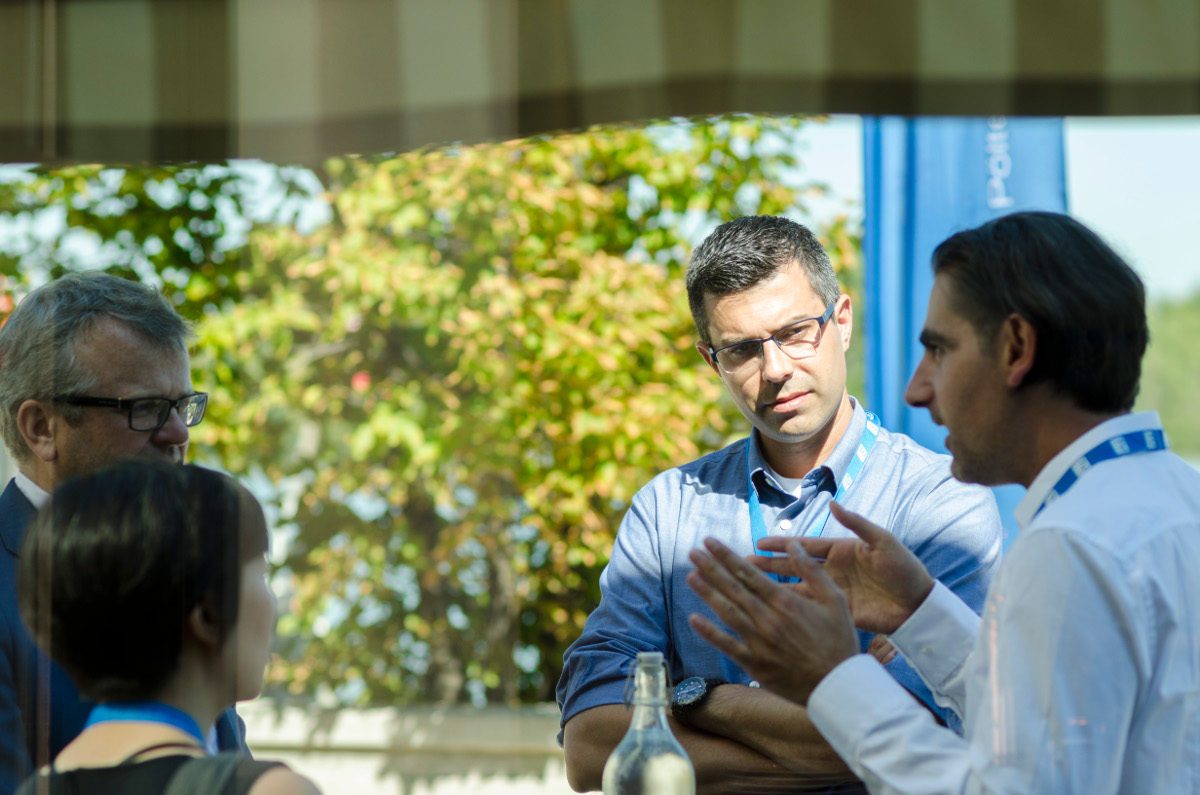No business these days can afford not to incorporate AI into its processes.
The central challenge for companies dealing with large amounts of data is a digitisation strategy. Here it comes to artificial intelligence and semantic technologies. The integration of these megatrends into enterprise processes and workflows will be the focus one of the subjects of the SEMANTiCS 2019, which takes place from 9 to 12 September in Karlsruhe, where top speakers from industry and academia will explore how AI systems can help businesses succeed in the digital age.
The central challenge for companies dealing with large amounts of data is having an effective digitisation strategy Click To Tweet
“Explainable AI is the is the key to progress and acceptance of AI,” says SEMANTICS 2019 General Chair Harald Sack. Explainability can be important in some applications, in particular, when AI is applied to humans. In other applications, it does not play any significant role. Some argue that our brain first acts and then tries to explain why it acted in a particular way, maybe mostly for communication purposes, to justify action and to convince others.
In lectures, panels and workshops numerous enterprise implementation projects and use cases will be presented which will help to bridge that gap between the complex concepts that underpin AI and the practical applications that concretely benefit businesses.
Topics include process optimization and automation, information logistics and data management as well as business development and customer relationship management. In community events, international high-tech experts will also discuss the future and significance of artificial intelligence in a broader context.
Explainable AI is the is the key to progress and acceptance of AI Click To Tweet
The keynotes will be held by prominent experts from the US and Europe, among them Willem Manders, Head of Knowledge Management at Shell, Michel Dumontier, Professor of Data Science at Maastricht University, Valentina Presutti, researcher at the Semantic Technology Laboratory of the National Research Council (CNR) in Rome and Michael J. Sullivan, Principal Cloud Solutions Architect at Oracle.
One of the core technologies for reducing complexity in business processes are Knowledge Graphs.
“Those who stay on their islands will fall back. This is currently the case with a large part of the data which is kept in silos,” says Andreas Blumauer, managing director and founder of the Semantic Web Company, which organizes the conference alongside FIZ Karlsruhe – Leibniz Institute for Information Infrastructure, Fachhochschule St. Pölten, and the Universities of Leipzig and Amsterdam.

“For every knowledge worker, it is a highly time-consuming task to identify, connect, understand, and interpret the right dots and information pieces. SEMANTiCS 2019 wants to show IT decision makers how companies can develop their own Knowledge Graphs along the whole Linked Data Life Cycle, to support decision and process augmentation based on that linked data,” adds Blumauer.
For Volker Tresp, Distinguished Research Scientist at Siemens, the
biggest challenges ahead when it comes to enterprises employing Machine Learning, Autonomous Systems and AI, is coming up with an effective business model that works for that individual company. In other words, there is no one-size-fits-all approach where it comes to leveraging Artificial Intelligence in your own business.
Those who stay on their islands will fall back. This is currently the case with many companies where a large part of their data is kept in silos Click To Tweet
“Machine Learning is a very strong and very robust technology. But this does not mean that each company knows how to transfer this success into a business. Currently, no company, whose business is on the internet, can do without AI. If it turns out that your company has an AI business, then you might have to drastically change the culture in your company. You can only be successful if you manage to hire the best talent and if you change the culture in your company so that it values, appreciates and listens to that talent.”
One example of an area where correct AI implementation can have a huge efficiency impact is Healthcare. Hospitals generate huge amounts of data each day, and patients can benefit from the structuring of that data into the Knowledge Graphs mentioned above.
“AI applications in image analysis have already been used for more than 5 years. Siemens Healthineers have been doing pioneering work and are working on many future use cases,” explains Tresp.

“I am completely convinced that knowledge graphs will become more important. As in the medical area, most domains consist of unstructured data (sensory data, images, …) and structured data (diagnosis, procedures, lab results, blood counts). Roughly speaking structured data is the domain of the knowledge graph and unstructured data is the domain of deep learning. A challenge is to have both talk to one another. That is what we are working on!”
According to Tresp, Deep Learning (DL) was the reason for the recent breakthroughs in AI and it will continue to be the basis for the progress for the next years to come.
No company, whose business is on the internet, can do without AI Click To Tweet“DL builds on available labeled data, new algorithms, computational power, and an incredible community. Deep Learning will interact more strongly with other approaches and we will see more hybrid approaches. For example, we and other research groups combine knowledge graphs with machine learning and deep learning. I am also convinced that the link to cognition will become stronger: one can learn a lot from the organizational structure of the brain. We as humans can manipulate symbols and this will also become more relevant for AI. But we have to go new ways and not warm up old ones. As I like to say: AI is not only Machine Learning, but without Machine Learning there is no AI. In the coming years we need to build a strong academic basis for deep learning and machine learning in Europe and be open to new ideas that can contribute,” he concludes.

Alice Bonasio is a VR and Digital Transformation Consultant and Tech Trends’ Editor in Chief. She regularly writes for Fast Company, Ars Technica, Quartz, Wired and others. You can follow @alicebonasio on Twitter, connect with her on LinkedIn or subscribe to her Inside VR/AR Newletter for the latest curated immersive news.









